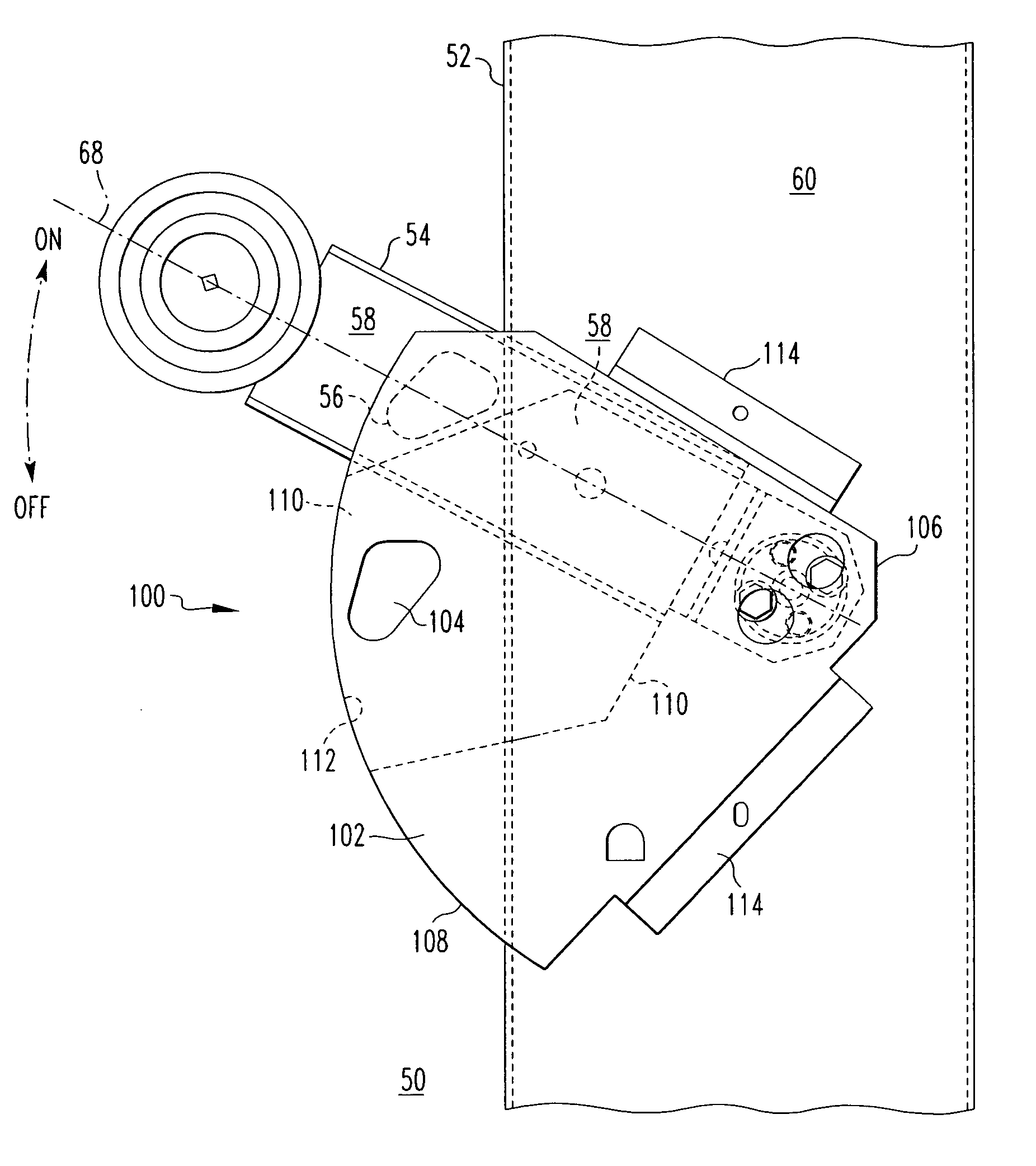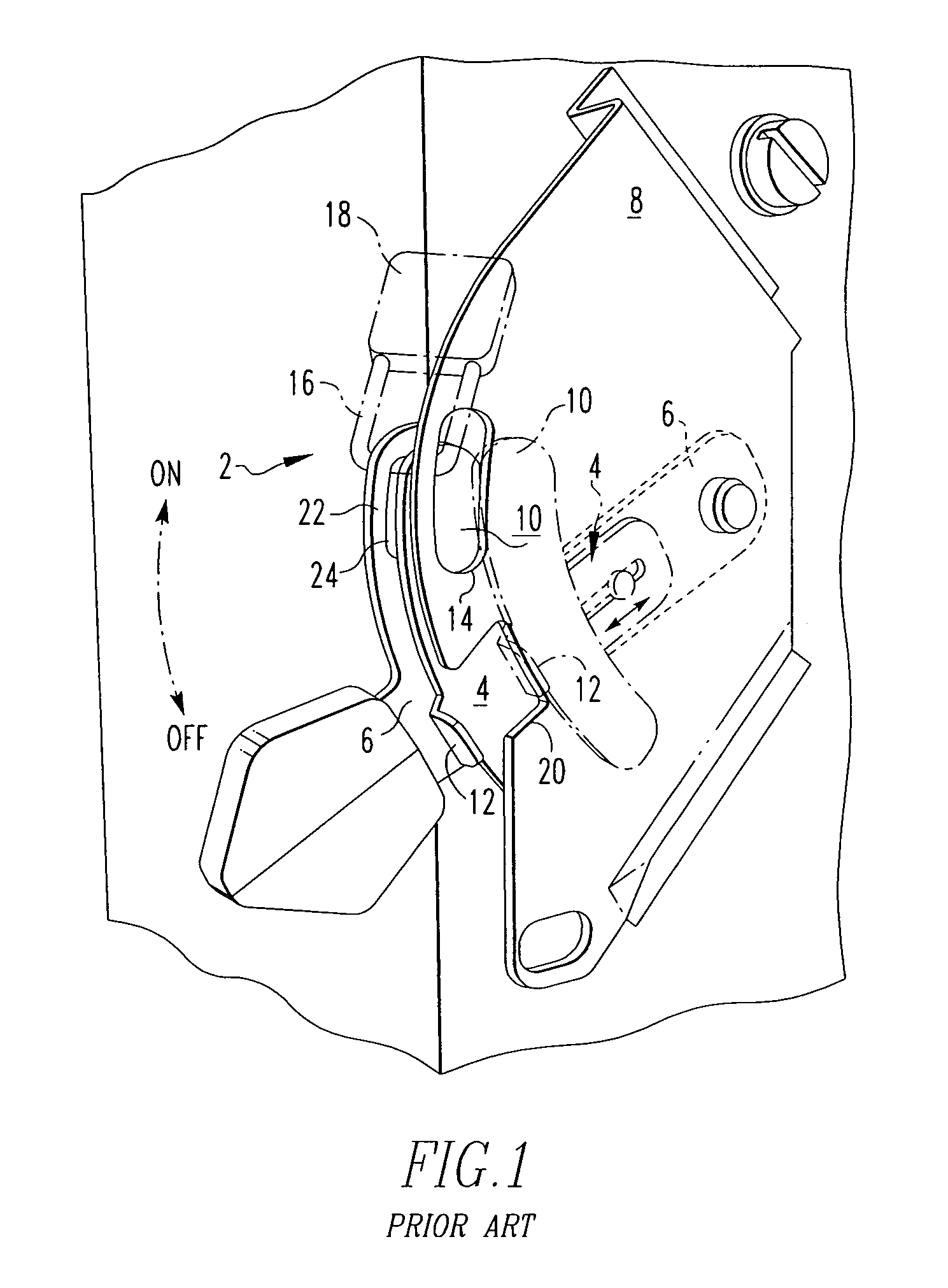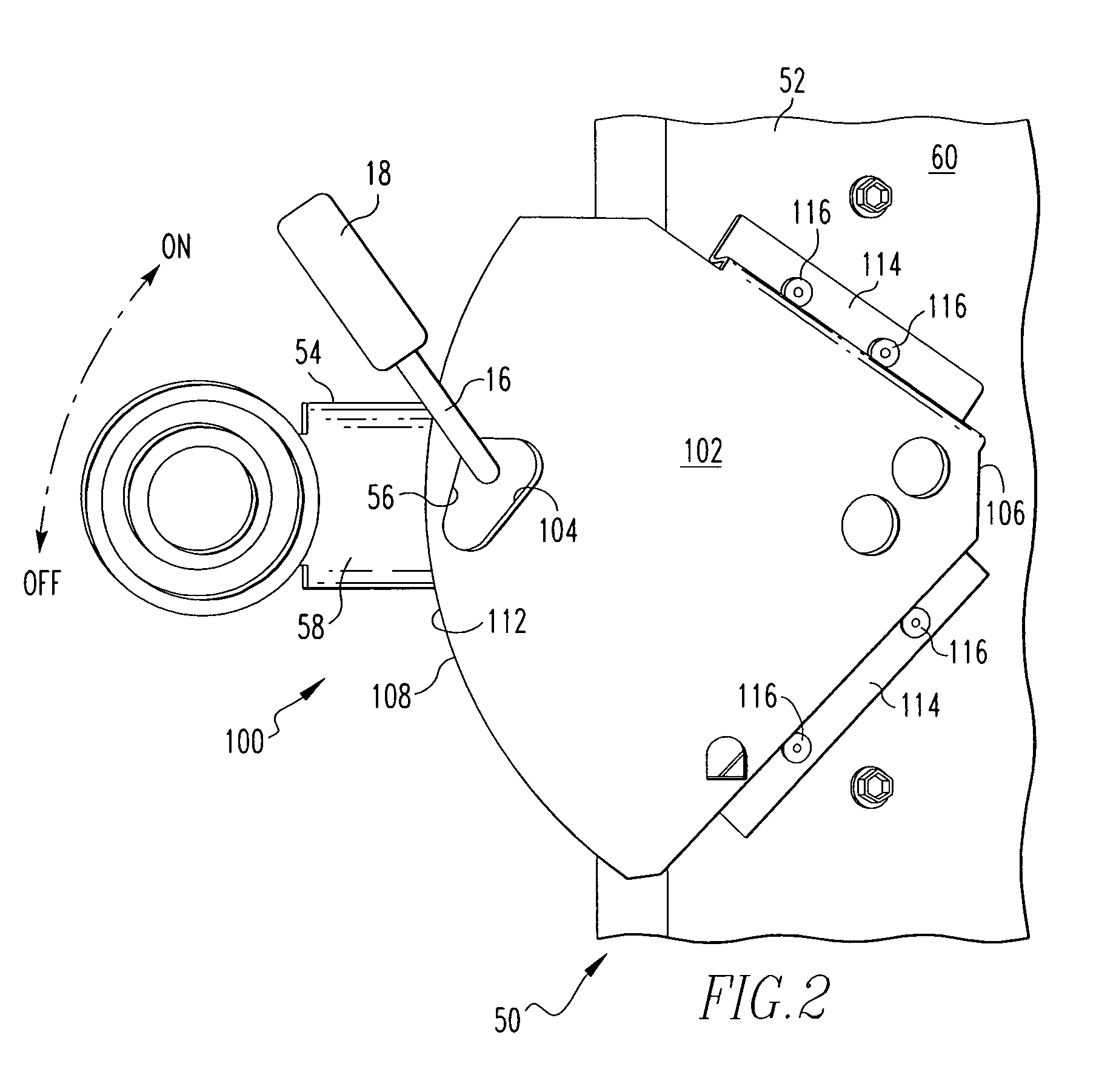Operating handle locking assembly for an electrical switching apparatus
a technology of locking assembly and operating handle, which is applied in the direction of electric switches, electric devices, basic electric elements, etc., can solve the problems of serious damage to an electrical apparatus, serious harm to a person, and electrocution or shock to a workman performing electrical work or repair
- Summary
- Abstract
- Description
- Claims
- Application Information
AI Technical Summary
Benefits of technology
Problems solved by technology
Method used
Image
Examples
Embodiment Construction
[0029]For purposes of illustration, the invention will be described as applied to an enclosed circuit breaker, although it will become apparent that it could also be applied to other types of circuit breakers (e.g., without limitation, molded case circuit breakers; single pole circuit breakers; multi-pole circuit breakers) and other types of electrical switching apparatus (e.g., without limitation, circuit switching devices and other circuit interrupters such as contactors, motor starters, motor controllers and other load controllers).
[0030]As employed herein, the term “fastener” refers to any suitable fastening, connecting or tightening mechanism expressly including, but not limited to, rivets, screws, bolts, the combination of bolts and nuts, and derivatives thereof.
[0031]As employed herein, the statement that two or more parts are “coupled” together shall mean that the parts are joined together either directly or joined through one or more intermediate parts.
[0032]FIGS. 2 and 3 s...
PUM
 Login to View More
Login to View More Abstract
Description
Claims
Application Information
 Login to View More
Login to View More - Generate Ideas
- Intellectual Property
- Life Sciences
- Materials
- Tech Scout
- Unparalleled Data Quality
- Higher Quality Content
- 60% Fewer Hallucinations
Browse by: Latest US Patents, China's latest patents, Technical Efficacy Thesaurus, Application Domain, Technology Topic, Popular Technical Reports.
© 2025 PatSnap. All rights reserved.Legal|Privacy policy|Modern Slavery Act Transparency Statement|Sitemap|About US| Contact US: help@patsnap.com



